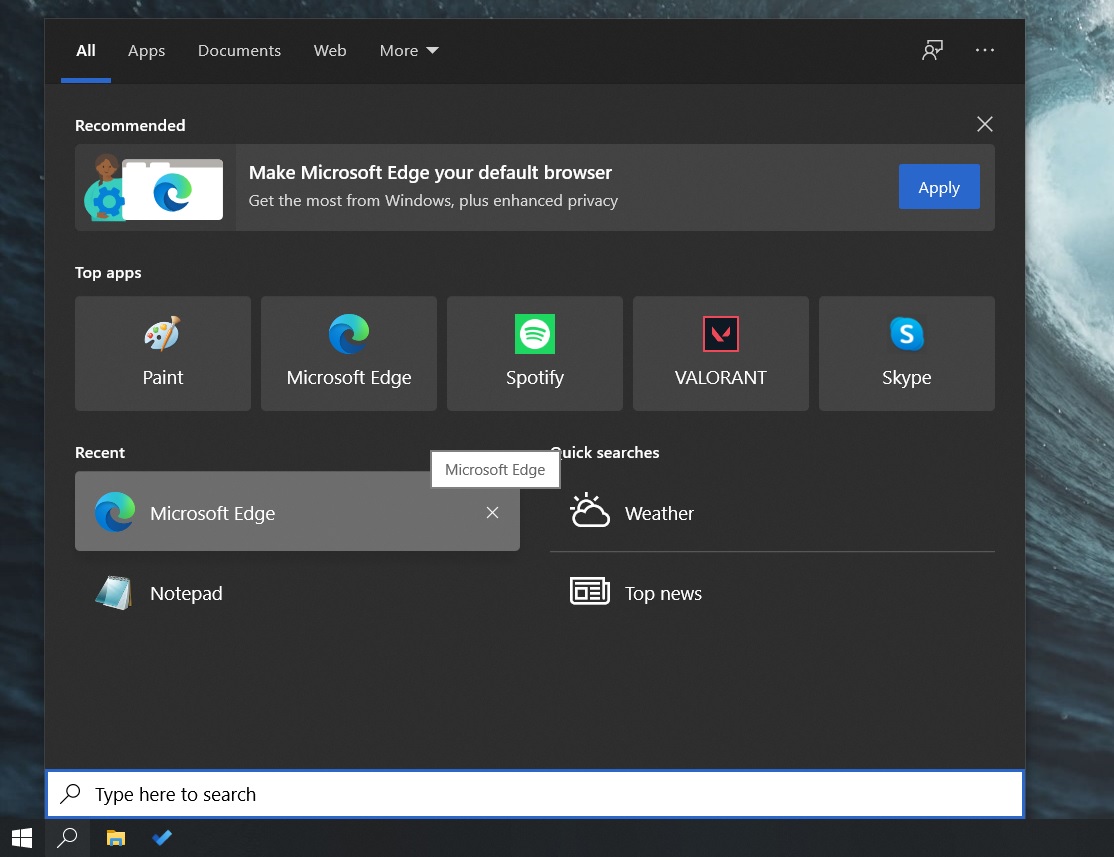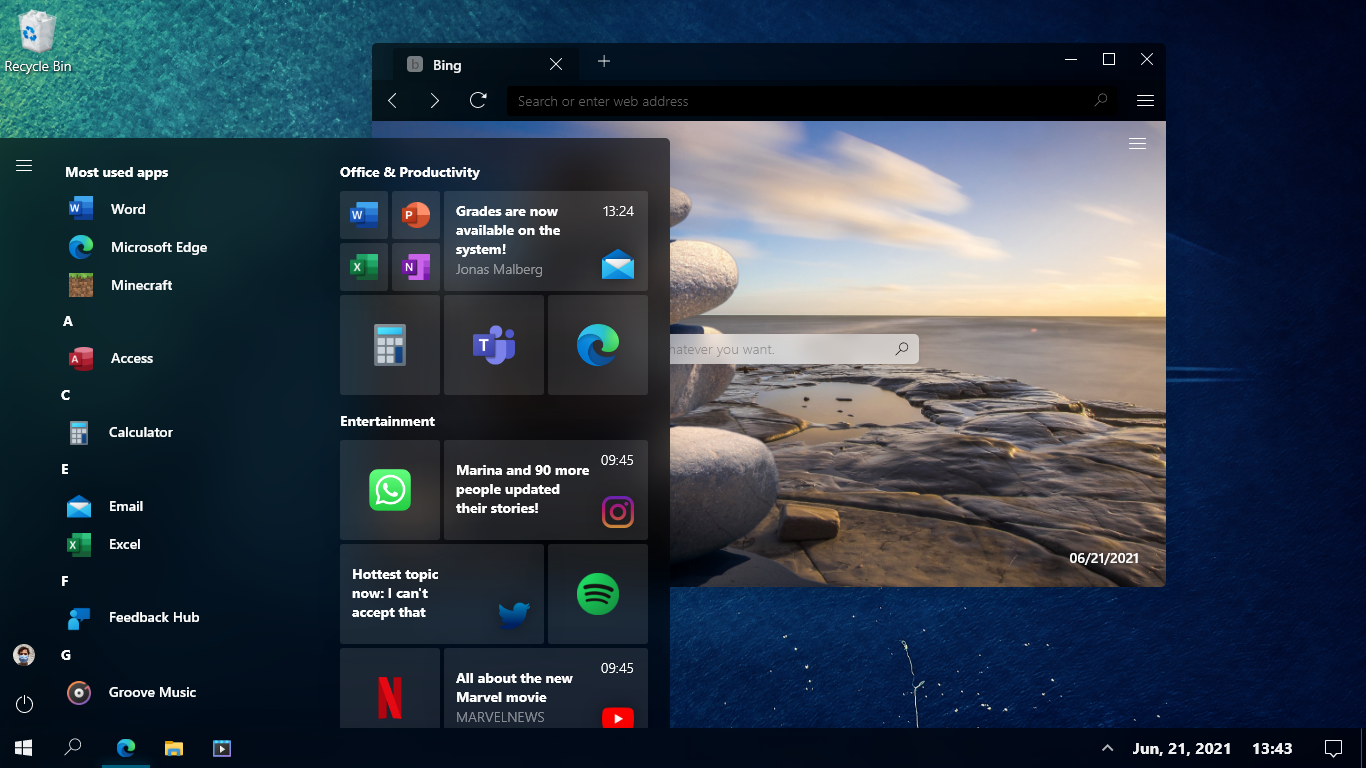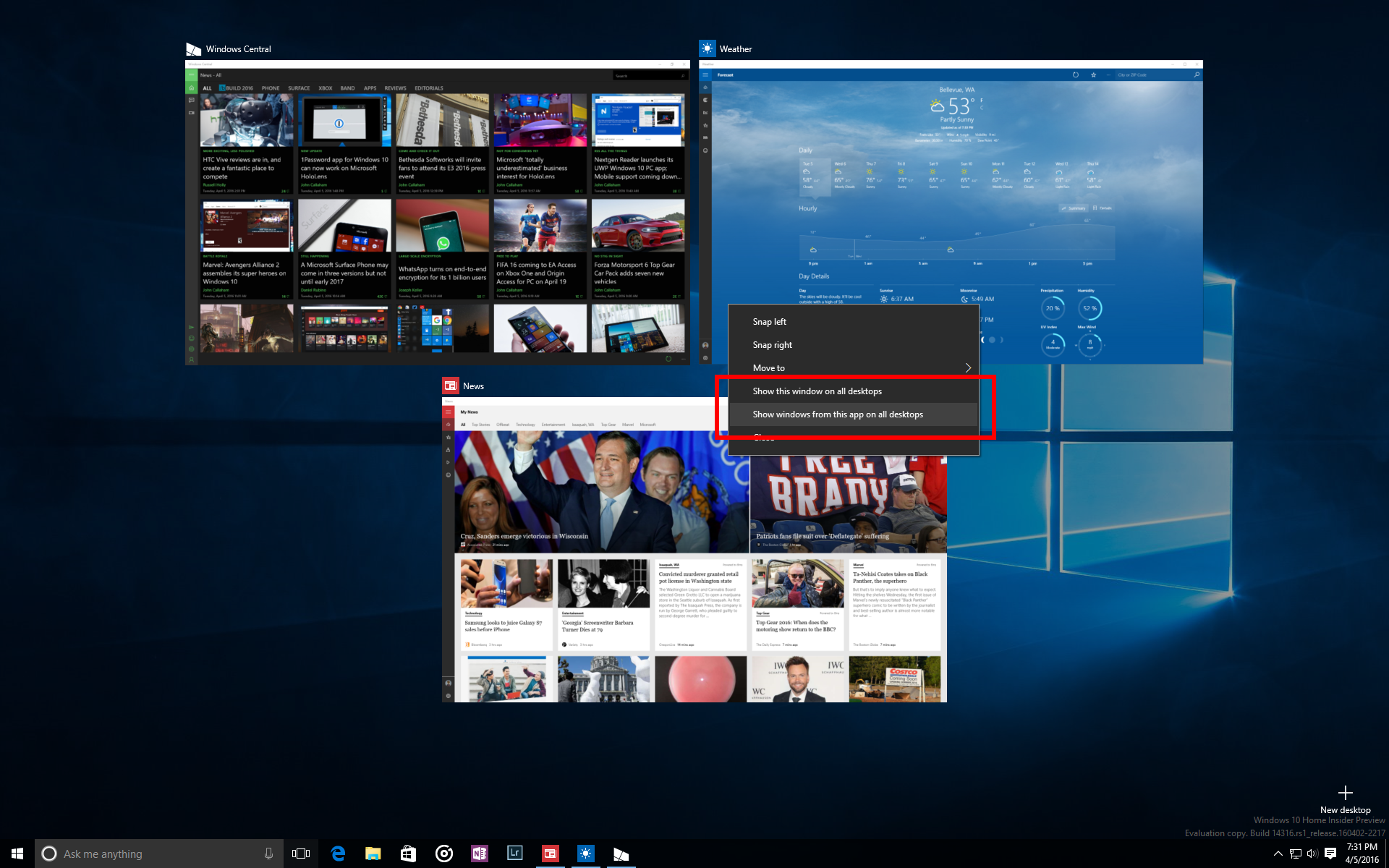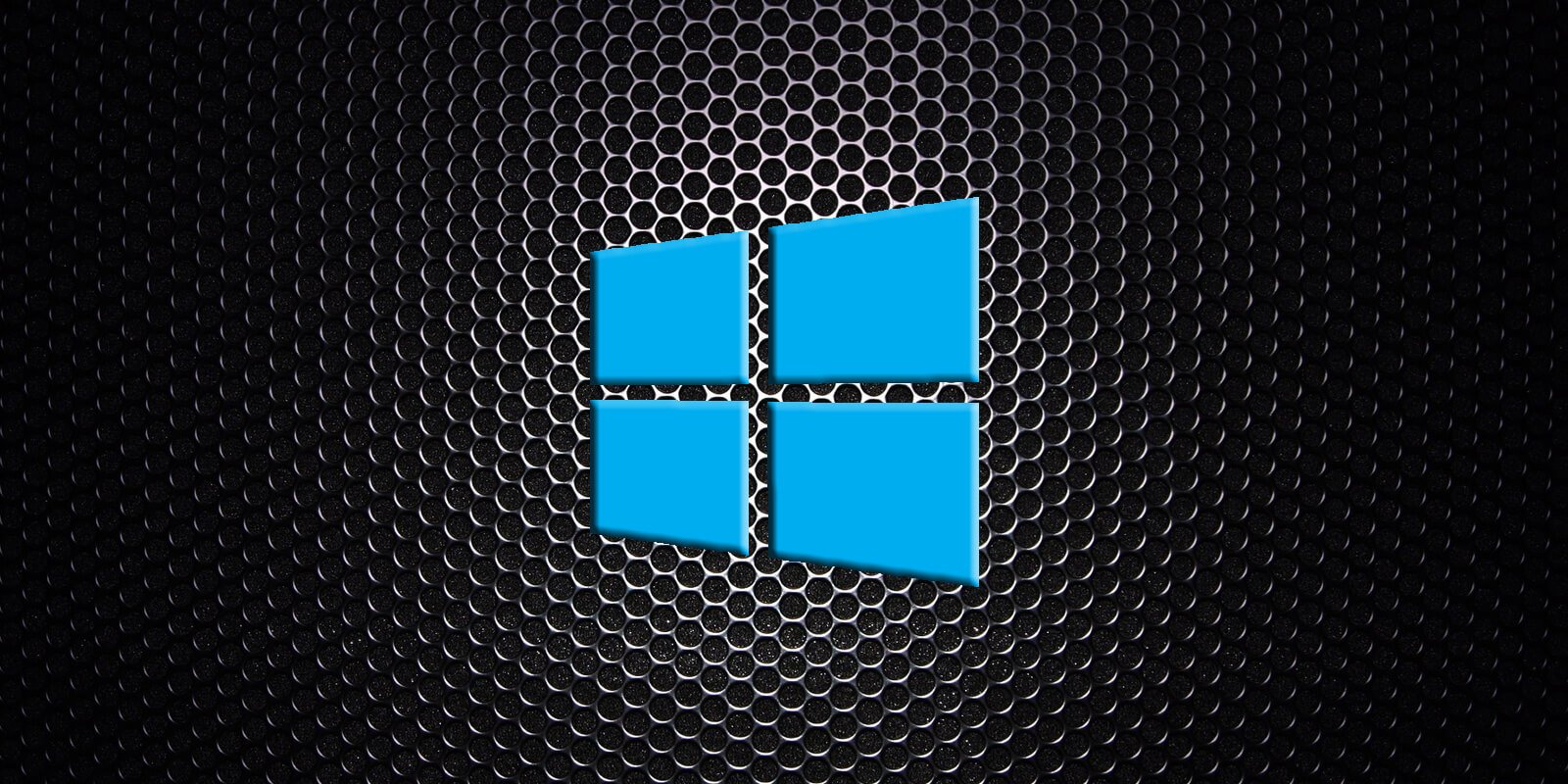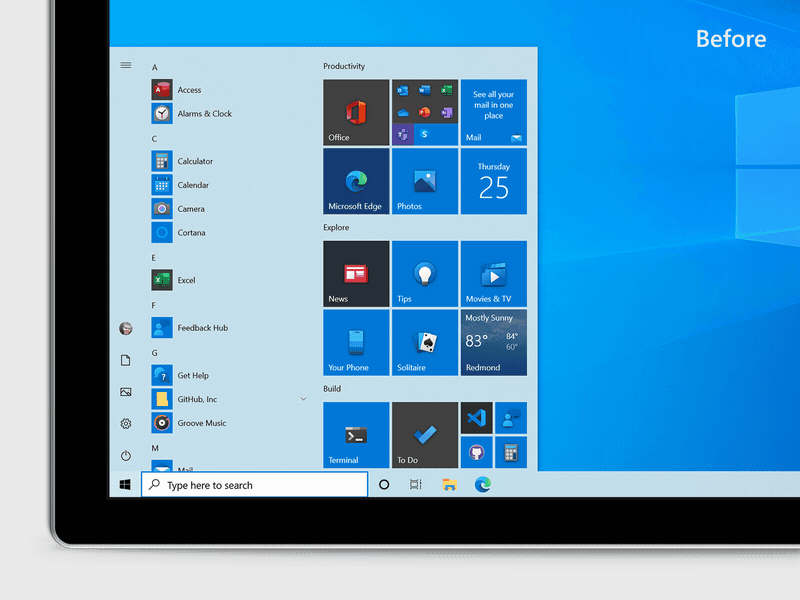Microsoft has releases feature updates to Windows 10 version 21H2to end-users. The latest major update for windows 10 comes with a redesigned start menu with theme-aware tiles that adjust their color scheme according to the user's chosen theme. A new more touch-friendly taskbar, ability to adjust the refresh rate for a display and more. Well, all compatible devices get a notification to download Windows 10 version 21H2. And when you are ready and hit the download button Windows 10 21H2 update download and install on your device. That means you have more control over windows 10 feature updates.
But unfortunately, some users are experiencing issues where feature update to Windows 10 version 21H2 failed to install Apart from this, the windows 10 21H2 update stuck for some users. Recently, Microsoft released the feature Windows 10 version 20H2, also known as the "October 2020 Update" for everyone. This is a huge update that includes a number of new features, security improvements, and various bug fixes. The latest feature update version 20H2 offered to all compatible devices via windows update. But recently users have experienced Windows 10 October 2020 Update failed to install.
Windows 10 20H2 Update Not Showing Up Usually, the system reboots without the upgrade. Some users said that the update gets stuck at 50% or 75% completion and then restarts abruptly. This creates an unfavorable experience for end-users as it directly affects their work. The Windows 10 Feature Update would download in 25 minutes in a perfect world, then install within 10 to 15 minutes. This might be the case for many users, but it won't be smooth sailing for other users. While Microsoft has made significant progress in reducing the size of Windows updates, the new version of Windows 10 will be a large update.
That's just the Windows update part—the installation is the most complex sequence of setup. Windows 10 will have to decompress files, move around key operating system files and personal files, and reconfigure everything to work with your hardware. Essentially, Windows gives you a clean installation of the new operating system without disrupting your configuration or personal data. It's a delicate balancing act that can actually extend the time it takes to complete the upgrade. So, make sure your laptop's battery is working and charged up, and if you are upgrading a desktop, connect it to a UPS. There's nothing more disastrous than an interrupted Windows update.
As usual, feature updates won't install automatically, but it should show up as an optional update in Windows Update, and you can install it manually. For devices running older versions of Windows 10, which might be nearing the end of support, then the update will eventually be pushed to your device so you can keep getting security updates. Whenever you run into a problem with Windows Update, it can be a frustrating experience. Sometimes, the steps to resolve the issue are specific to the error message at hand.
For example, when you receive a message like "feature update to windows 10", you'll see below you might need specific help. Keeping Windows 10 up to date is important to improve security and keep it running smoothly. The Windows Update is an essential component that provides monthly updates to download and install. But, you probably don't care especially if you receive one of those annoying "feature update to windows 10" error messages.
I am trying to push out feature updates to 20H2 via WSUS to computers running 1909. I've installed on my laptop to test and when it asked to restart. I restarted it and after booting up, I ran the winver and it is still showing 1909 build. Go to windows update history and it says 20H2 installed successfully. Based on the prior feature release processes, for example, I know that at the office I will need to deal with repairing PDF printers that will be impacted by the feature update.
I use various software products from Intuit, and I have to use the PDF repair tool to fix up my QuickBooks after the feature update process. I also check that backup software and other applications that I have installed on my standalone computers and workstations are happy after the feature update. Eventually, you'll get to a screen that says "Ready to install". By default, it's set to "Keep personal files and apps". If you click the option to change it, there are two other options. You can choose to keep just files , or nothing at all.
With the default, you're upgrading the same way you did above. If you choose nothing, it's a clean installation. I've found this to be due to the feature update checking for critical updates in the background, pre-installation. If I use the media creation tool and the '/dynamicupdate disable' switch it flies through the install. I'm having to build an app in SCCM now to deploy 20H2 as you cannot manipulate this setting via SCCM as a software update, so far as I can tell. This was especially prevalent for us as we have a group policy in place for dynamic updates throttling comms to Microsoft for updates to 10kbps.
For some reason this update check falls outside of config manager and can go directly to Microsoft. After waiting 3 1/2 months for the update for 2 of my computers, I just downloaded the Media Creation Tool, saved it as an ISO file to my PC and created an USB drive for my other computer. When I started to install the update, I disconnected the Ethernet cable or disabled the WiFi so as not to be connected to the internet while installing the update. After the update was installed, then I connected the Ethernet cable or enabled the WiFi to connect to the internet to check for updates. As you try to upgrade a computer to version 21H1, you may see the error code 0xC , which indicates that the system has not completed the cleanup of the previous installation files. You can quickly get around this issue by rebooting the computer, or you can delete the previous setup files using Storage Sense.
The Microsoft Media Creation Tool allows you to complete a clean installation or an in-place upgrade. However, even when this is the recommended tool when Windows Update does not work, you can also come across problems, including issues downloading the files and opening the application. When the update completes the first phase of the installation, you will be prompted to restart your PC immediately. The update assistant will also initiate a 30-minute countdown. If you do not select an option, after the count down, your PC will restart and the update will start installing.
Two identical HP desktops installed with MS source media Windows 10 Home 64-bit. One is loaded with MS Office and a bunch of other stuff, one has nothing on it but backup software. The loaded one updated silently overnight, no problems at all. Removed everything from it – drivers, backup software, anything that was in Programs cpl – tried every single published TechNet-Support-Forums activity to trick into updating, and it still fails. Leads me to suspect a hardware issue since there is literally NOTHING on this pc except Windows 10 Home.
I've decided to just ignore the "update failed" message since I do not use it for anything except file storage and back ups. I use a Dell Z440 and it failed multiple times trying to go from 1703 to 1709. Google showed several people mentioned my exact same error but apparently had a different cause.
Here's where I get less "common" and what I believe finally fixed me. I have a platter D drive where I keep the lion's share of my personal files. If you right click on system folders like Desktop, Music, Documents, etc, you are able to set a custom location for them. I've re-routed 7 folders under my user profile to my spacious platter.
Taking a guess I unplugged my internal D drive, logged in as a different user and ran the update. Shut down the computer, plugged D back in, logged in as myself… uh oh. Open Disk Management and my platter reports as a Foreign Disk. Right-click Import and breathe a sigh of relief as I see my directories are unharmed.
Reboot one more time and all is well when I log in. You don't want to burn your bridges while trying to upgrade to the latest Windows 10 Feature Update. It's pretty much a sure bet that Microsoft releases the new version on the day they will remove the previous version of Windows 10 from the Media Creation Tool. That means you won't be able to download the older Windows 10 release anymore or earlier versions, such as 1511 or 1507 if you need to go back. It turns out, some systems, while compatible with a particular version of Windows 10, might not work with the latest release.
Reference our comprehensive guides for backing up your system before initiating the installation. Go ahead with installing the update and when you are prompted, insert a USB flash drive with 10GB free into the PC and continue with the update. However this method makes the update process much slower especially is the flash drive is USB 2.0. There is also Long-Term Servicing Channel Windows.
It is a separate version that only receives Quality Updates and not Feature Updates. For more information, refer to this article. Defer The term Microsoft use to delay the checking for and installation of Windows updates.
The amount of time one can defer updates for depends on the version of Windows 10 the device is running. Deferring an update does not change its frequency. Updates will not show up in patch scans if they have been deferred until the deferral time has passed.
If three updates are released in a month, users will receive three update notifications but they will do so once their device's deferral period has expired. Patch A dated term used to refer to a Windows update. 3) Click the Update button next to the driver you want to update to automatically download the correct version of this driver, then you can manually install it . Now again open Windows update and check for updates. Check if there is no more problem installing windows updates.
I always use the release of a new feature update to be the sign that I need to ensure that all of my main computers are on the prior release. I prefer to stay one release behind, as it typically provides me with a stable system with full Microsoft support, and I'm able to identify what issues I may face. So I'm using this time to ensure I have a copy of Windows 10 21H1, which was released in May, saved on a flash drive or on a storage location on a hard drive. The DISM tool allows you to identify and fix issues with your system by simply running commands. It checks for corruption on your system and automatically applies fixes to restore damaged or missing files.
If a service related to Windows Update is experiencing issues, has been turned off, or is set to incorrect settings, it's possible that it's the cause of your errors. Luckily, you can simply fix this by executing some commands which reset your services that work with delivering updates. My HP laptop recently tried to install the upgrade and overheated during the install.
The BIOS shut down the PC and then restarted when it cooled down. Guess what, the install was doing restart cycles with the root record set to boot from the RAM disk that no longer existed… so the whole install crapped out and my system was unbootable. Luckily I had an image backup and finally got it restored. Now Microsoft wants to do the upgrade again and I'm trying to stall it until I have the time to baby sit the install and try to keep the system running. Over the past few releases of Windows 10, the upgrade wizard can take its own sweet time to start if you choose the option to Get important updates. If you choose it and the setup appears to be taking ridiculously long to move past this stage, close the setup wizard and restart your machine.
You won't lose files, your important data, or anything else. The solution is quite easy, and here's how to fix it. As with update 2004, 20H2 will not be automatically applied – you need to go to Start/Settings/Update and security. If it is available for your PC you will be asked to download and install the update. Microsoft say the are "throttling up" the roll out of 20H2 but don't be surprised if you don't get offered it immediately.
Windows 10 version 20H2 is a relatively small feature update, just like version 1909 was last year. If you're running version 2004, this update will simply be an enablement package, essentially turning some features that are already baked into version 2004, but turned off. Because of that, users on version 20H2 will get all the same monthly cumulative updates as version 2004.
This also means there's not a lot of new features, but there are some notable ones nonetheless. The bug was first discovered in the May 2020 Update and it remains unresolved for some unknown reasons. If you have these audio drivers installed, Microsoft says it will apply a compatibility hold on your device and prevent it from receiving feature updates. Microsoft also clarified that Windows 10 version 20H2 is not being forced and users won't receive it right away if they don't actively check for updates.
The update is rolling out to those who check for updates on devices running Windows 10 versions 1903, 1909, and 2004. After you complete the steps, the tool will clean up the previous installation files, and you should now be able to proceed with the update. If you are using the Media Creation Tool to perform an in-place upgrade, it could happen that the setup won't start automatically after downloading the required files. If this happens, you may need to start the upgrade process manually. Although the upgrade process to a new version is usually smooth, there are always chances of issues, especially if you have to upgrade from a version that is no longer supported. Usually, the problems happen due to the new system changes, but many other times, issues occur because of hardware and software incompatibility, outdated device drivers, or custom configurations.
Since this is a minor update, it will arrive as a quality update for devices already running the two most recent versions without the need for reinstallation. However, on computers still using an older release , the upgrade won't change, and complete reinstallation will be required. My advice is to hold off installing either release for the time being. Many of us Windows admins consider it unwise to install either a new feature release or a new version for several months after it's been released.
Time after time we've seen the first few updates after each major release full of fixes for bugs and issues triggered by the new release. The latest Windows 10 update is released gradually to Windows 10 PCs. When the update is available for your PC, it will be available to download and install via Windows Update. However, if you wish to jump the queue and install Windows 10 20H2 manually, open Microsoft.com/en-us/software-download/windows10, click Update Now to download Windows 10 update assistant. Then, open the update assistant to install Windows 10 20H2 update manually.
Microsoft will release Windows 10 20H2 update to users gradually. Over time, this major, bi-annual feature update will become available to download and install via Windows update. Many users run into error messages related to the Windows Update failing. Hi Danny, I have installed from USB many times, and I have a USB drive with the CU installation files. I actually did the first attempt for an upgrade from USB, but it failed without an error message. A second attempt, now with Windows Update, gave me a specific error message that I was able to correct and proceed with the install .
